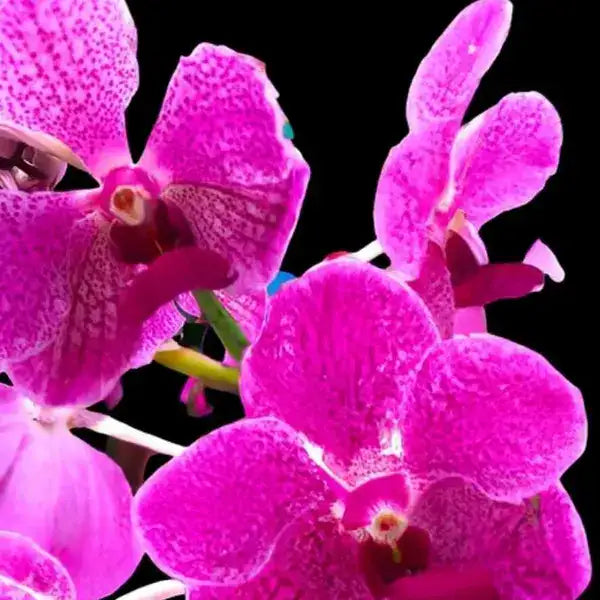
Vanda (VS-015) - Medium
Selling size : Last image | Net pot included | Secure packing
"Vanda care" generally refers to the care requirements for Vanda orchids, which are popular for their vibrant, large, and often fragrant flowers. They are epiphytic, meaning they grow on other plants (like trees) in their natural habitat rather than in soil.
Here's a summary of key Vanda orchid care :
1. Light:
Vandas need bright light to thrive and bloom, but generally prefer indirect bright light.
Direct morning sun is often ideal. In hotter climates, protect them from intense midday sun with shade cloth or by placing them under a tree with dappled sunlight.
Leaf color can indicate light levels: too little light may result in dark green leaves and no blooms, while too much sun can cause yellowing or scorched leaves.
2. Watering:
Vandas require frequent watering, especially if grown bare-root in baskets. In hot, dry conditions, daily watering or even twice a day might be necessary.
If grown in a medium (like bark or sphagnum moss), water as the medium approaches dryness, typically every 5-7 days.
Thorough drenching is recommended. You can soak the roots in water for 10-15 minutes, allowing them to fully absorb moisture.
Ensure good air circulation around the roots to prevent rot.
Water in the morning to allow leaves and roots to dry before nightfall, reducing the risk of bacterial growth.
Use water low in alkalinity, such as rainwater, distilled water, or reverse osmosis water, if possible.
3. Humidity:
Vandas thrive in high humidity, ideally between 60-80%.
In drier environments, you can increase humidity by misting daily, using a humidity tray (with pebbles and water, ensuring the plant isn't sitting in water), or grouping plants together.
4. Temperature:
Vandas prefer warm temperatures.
Daytime temperatures generally range from 70-90°F (20-32°C).
Nighttime temperatures between 60-65°F (16-18°C) are often ideal.
Avoid prolonged exposure to temperatures below 50-55°F (10-13°C), as this can stunt growth or delay flowering.
5. Potting/Mounting:
Many Vandas are grown bare-root in slatted baskets, allowing for excellent air circulation. Their aerial roots are a defining characteristic.
If potted, use a coarse, soilless orchid mix (like bark, charcoal, or large perlite) in a pot with good drainage. Standard potting soil will lead to root rot.
Repotting is generally done every 1-2 years or when the medium breaks down.
Some growers also mount them on driftwood or cork bark.
6. Fertilization:
Vandas are heavy feeders during their active growing season (typically spring and summer).
Use a balanced orchid fertilizer (e.g., 20-20-20 NPK) at a reduced strength (1/2 to 1/4 of the recommended dose) with every watering or every other watering.
Reduce or eliminate fertilization during periods of inactive growth (winter).
Flushing the media with clear water once a month can help prevent salt buildup.
7. Air Circulation:
Good air movement is crucial for Vandas, especially with high humidity, to prevent fungal and bacterial diseases.
In summary, Vanda orchids require a tropical environment with ample light, high humidity, warm temperatures, and frequent watering with excellent air circulation. They can be challenging for beginners in non-tropical climates, but with the right care, they reward growers with stunning blooms.
Vanda Care can also refer to a company called Vanda Health, which provides consulting and management services for community-based healthcare, including senior living and in-home care agencies. If your query was about this company, please clarify!

